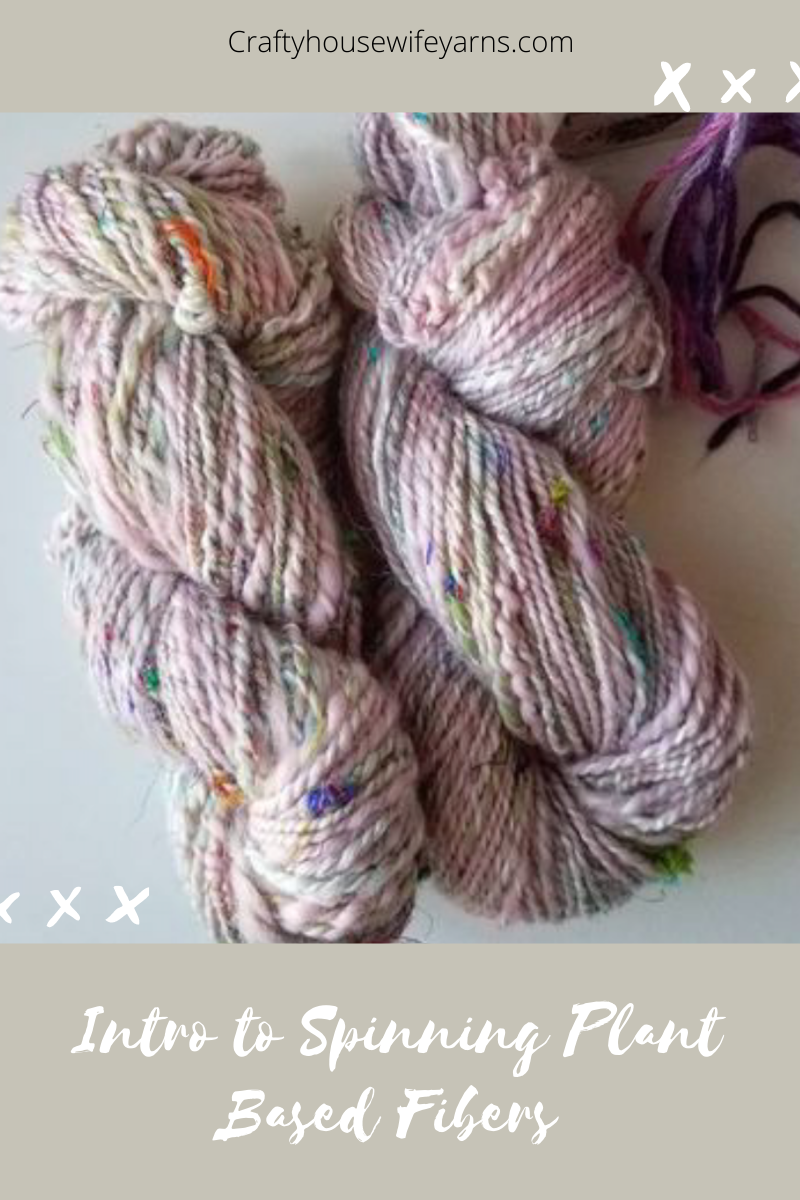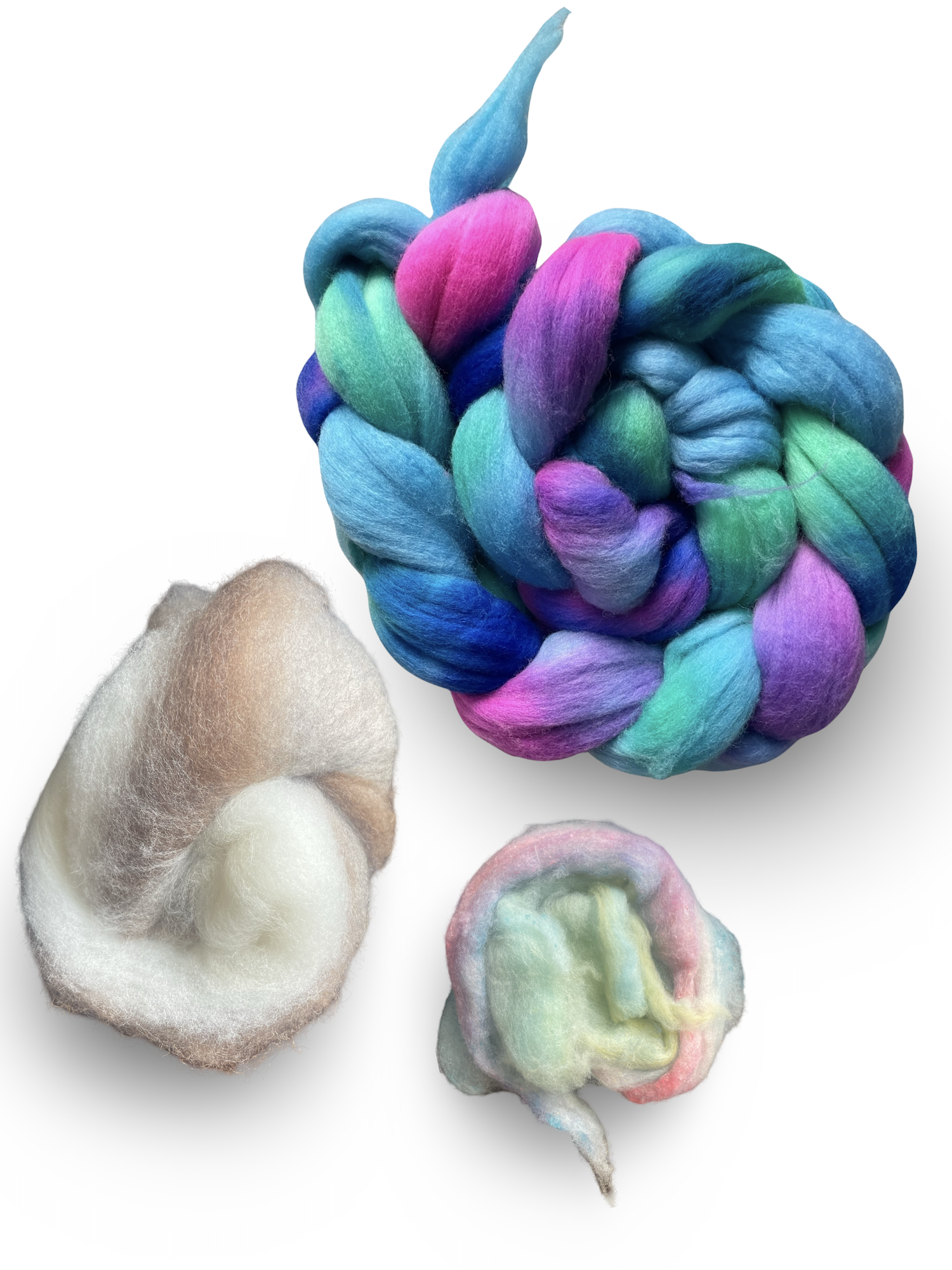An Introduction to Spinning Natural Plant Fibers
Written and Designed by Brittany of @Bee _ Ritt _ Fiber_ Arts on Instagram Please follow her for more inspiration and creativity with the fiber arts. You can even buy some of her gorgeous art yarn weavings at her Website .
I am definitely a huge fan of protein fibers. Silk is my favorite (as you saw in my previous blog post) and I don’t think I will ever get enough wool in my life. But I knew about protein fibers long before my spinning journey began. And I am the director for MyLocalWool. I kind of have to be a wool fan. However, when I started spinning about a year and a half ago, I was introduced to a whole other “animal”: Plant Fibers!
Plant fibers have been used for thousands of years, and not just in the creation of textiles and fabrics. It makes me think of the line in that Moana song “consider the coconut… we make our nets from the fibers”. Mankind has been spinning and weaving plant fibers for all kinds of uses: baskets, rope, netting, and the list goes on.
Everyone knows about the common plant fibers: cotton and flax. But apparently just about any plant has spinnable fibers if you try hard enough! I’ve seen the video circulating social media of the women spinning lotus “silk”, read an entire blog series about a woman turning milkweed into spinning fiber, and watched Crafty Housewife Yarns literally sell BANANA “SILK” YARN. The list goes on- pineapple, mint, bamboo, rose, corn silk.
My first foray into plant fiber spinning was attempting to spin some combed cotton top. It was a disaster. Those fibers are SHORT and the yarn kept breaking on me. After it broke for about the 4th time I gave up on cotton. (Still haven’t really gone back, although I occasionally add cotton neps or recycle cotton cord waste to my art batts for texture).
After that I decided to try a plant with longer fibers: rose. This time, I blended it with wool and spun it from rolags. The different fiber prep definitely helped the spinning but I still found my yarn breaking a few times, particularly where the wool was thinner and the rose took over, and that rose fiber was so slippery! So what was the deal?
Turns out plant fibers and protein (animal produced) fibers differ A LOT.
Most protein fibers have tiny, microscopic scales (human hair included). These scales open up when exposed to heat, and they close when exposed to cold. If you make this process of opening and closing happen too quickly, the fibers become felted, or matted together.
Plant fibers don’t have scales. They are mostly made up of cellulose. There is a whole lot of chemistry talk we could go into speaking on the makeup of plant fibers, but the short of it is they don’t felt. They don’t have tiny scales that hold onto the surrounding fibers and lock them together. Because of this most plant fibers (except the rougher ones, like jute, hemp and flax) require more twist to keep them held together.
That was the key I was missing! More twist. Crank up the spinning speed and slow down the bobbin uptake. Slippery was a good description of the rose fiber. It was slippery because it had no scales.
You can definitely spin plant fibers on their own! I’ve seen some people spin the most beautiful yarn and thread from cotton. If you are struggling like me though, blending your plant fibers with a protein fiber, like wool, will help a lot.
After spinning your yarn, whether it’s plant or animal fiber, you most likely set your twist with a little water bath. This is an important step when spinning wool, because sheep have curly hair- crimp! When the fibers are combed and stretched out and spun the crimp is flattened. Adding a bit of moisture causes the fibers to shrink up because of the natural crimp. Your resulting yarn is usually a little shorter and fuller after a wash. If you plant to knit or crochet with your wool yarn and you think it will ever be exposed to moisture (humidity, washing, etc.) it is really important you not skip this step.
Plant fibers do the opposite though! They absorb moisture, some actually quite well. When you wet your plant fiber yarns they will “grow”. They are bigger when wet because the fibers themselves are absorbing the liquid.
Water plus agitation can also cause protein fibers to felt. Not so with plant fibers! Some plant fibers, like flax, are even spun slightly damp to help smoothen the individual fibers and create a smooth yarn. The process of washing with agitation and heat drying can also soften some plant fibers.
I don’t think I’ll be giving up my wool anytime soon. But I love the sheen and texture adding plant fibers gives to my yarns. The price is generally cheaper than silk and some of the more exotic animal fibers; so when I am looking for elements to add to my art batts, after reclaimed materials, I always like to include plant fibers.







